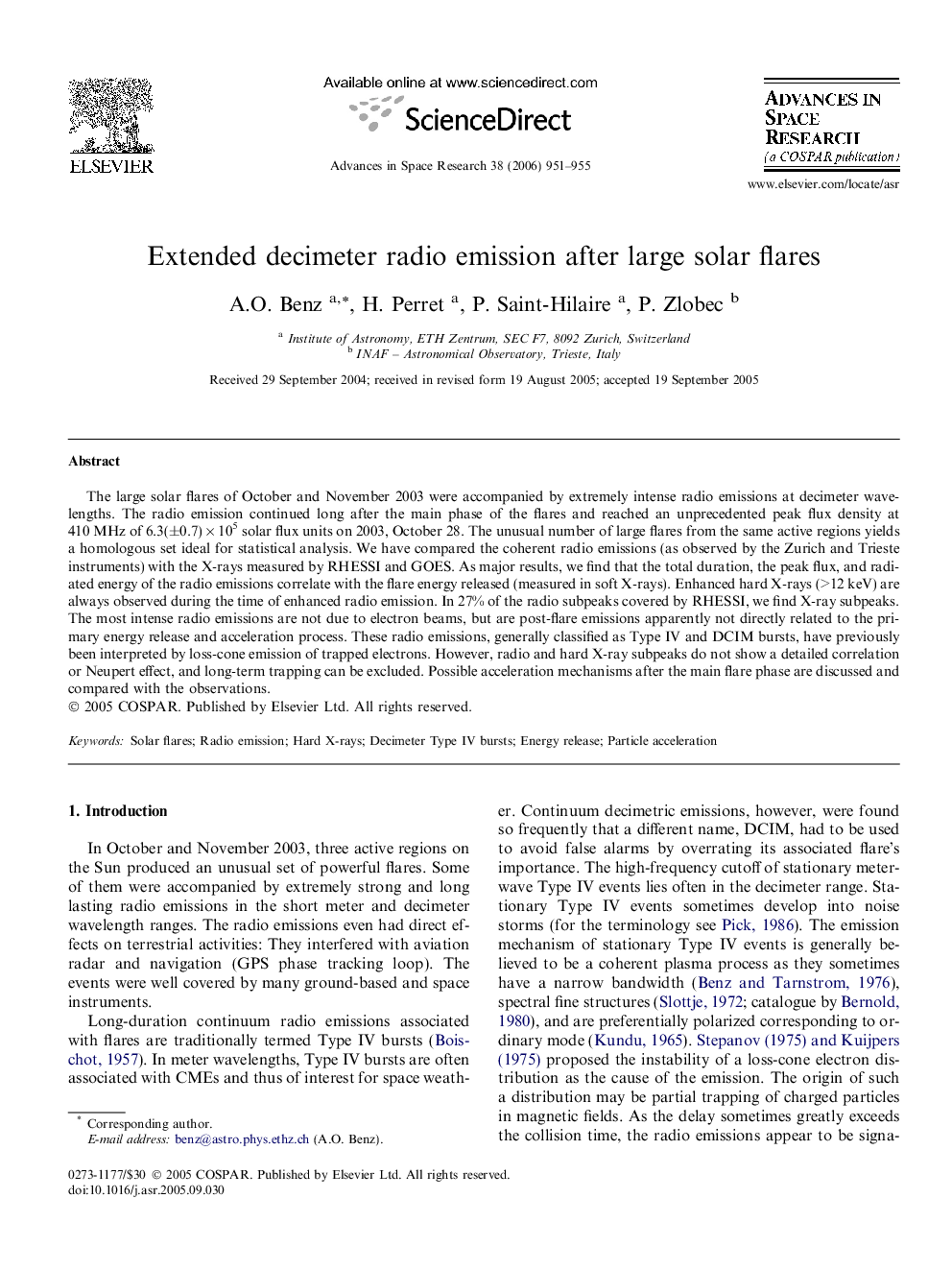| کد مقاله | کد نشریه | سال انتشار | مقاله انگلیسی | نسخه تمام متن |
|---|---|---|---|---|
| 1769088 | 1020254 | 2006 | 5 صفحه PDF | دانلود رایگان |

The large solar flares of October and November 2003 were accompanied by extremely intense radio emissions at decimeter wavelengths. The radio emission continued long after the main phase of the flares and reached an unprecedented peak flux density at 410 MHz of 6.3(±0.7) × 105 solar flux units on 2003, October 28. The unusual number of large flares from the same active regions yields a homologous set ideal for statistical analysis. We have compared the coherent radio emissions (as observed by the Zurich and Trieste instruments) with the X-rays measured by RHESSI and GOES. As major results, we find that the total duration, the peak flux, and radiated energy of the radio emissions correlate with the flare energy released (measured in soft X-rays). Enhanced hard X-rays (>12 keV) are always observed during the time of enhanced radio emission. In 27% of the radio subpeaks covered by RHESSI, we find X-ray subpeaks. The most intense radio emissions are not due to electron beams, but are post-flare emissions apparently not directly related to the primary energy release and acceleration process. These radio emissions, generally classified as Type IV and DCIM bursts, have previously been interpreted by loss-cone emission of trapped electrons. However, radio and hard X-ray subpeaks do not show a detailed correlation or Neupert effect, and long-term trapping can be excluded. Possible acceleration mechanisms after the main flare phase are discussed and compared with the observations.
Journal: Advances in Space Research - Volume 38, Issue 5, 2006, Pages 951–955